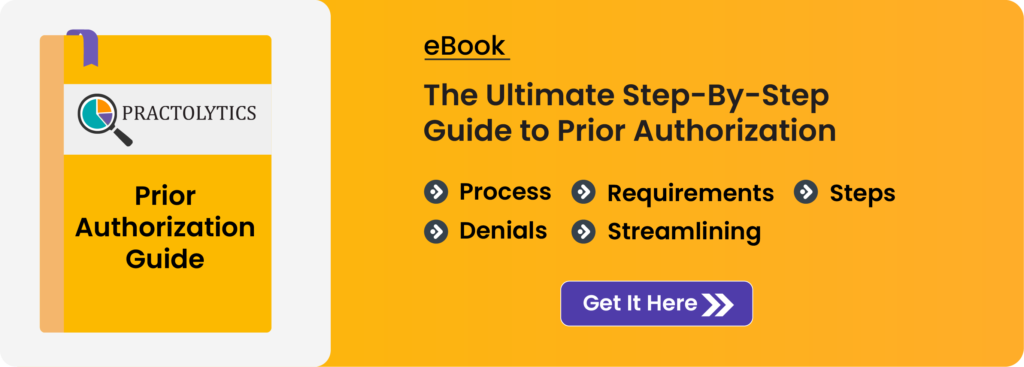How to Ease Patient Frustration from Prior-Auth Delays Affecting Care
How to Ease Patient Frustration from Prior-Auth Delays Affecting Care by improving communication, using automation tools, and implementing transparent procedures that speed up approvals and reduce stress. Learn practical ways to manage denials, accelerate timelines, and support patients waiting for authorization. Discover how simple fixes like assigning one PA owner, using checklists, and automating updates can double approval speed and boost satisfaction. See how Practolytics helps providers minimize delays, streamline prior authorizations, and strengthen trust between patients and care teams.
Table of Contents
Ease Patient Frustration from Prior-Auth Delays
Prior authorization delays hurt patients and clinics. Patients wait for care while insurers review requests. This causes stress, loss of trust, and health risks. Here’s how clinics and hospitals can reduce PA frustration. We share facts, updates, clear steps, and tech solutions. We use simple words so teams act fast.
Why fix this now?
Delays push patients to quit treatment or get sicker. Doctors waste time on paperwork. Staff burnout chasing approvals. Fixing PA isn’t just admin work—it’s patient care.
Recent data shows that most doctors say PA harms care. Many patients leave treatment due to PA hurdles. These problems are growing. Simple solutions matter now.
The Scope: Short Facts you Should Know
Most practices deal with many healthcare prior authorizations (PAs) weekly. Staff spend too much time on them.
Big groups see long PA delays—often days or more for answers. With cancer care, waits average five days or longer. This can hurt patient results.
People are worried: Many adults call delays and denials a big problem.
Some insurers now cut PAs for common tests and speed up choices. This move grows through 2026.
These points show that PA delays hurt both everyday and urgent care.
Why Patients get Frustrated
- No clear timelines. Patients remain uncertain about approval duration.
- Communication gaps. Patients lack updates on request status.
- Repetitive outreach. Staff duplicate insurer calls—patients perceive disorganization.
- Schedule disruptions. Rescheduling erodes efficiency and confidence.
- Cost unpredictability. Delayed approvals risk unexpected financial burden.
Resolving these five friction points accelerates satisfaction.
Four Pillars to Ease Frustration
Use these four clear steps. Each one helps patients and speeds up work.
1. Talk early and plainly.
Inform patients promptly if a Prior Approval (PA) is required. Use simple words: explain what it is, why it’s needed, and what comes next.
Give honest timelines. Say, “Most insurers take 3–7 days,” or explain if it’s longer.
Name a contact person—such as a PA assistant—so patients know who to call.
Text or email updates at each step (sent, waiting, approved, denied). Small updates ease worry.
Why it works: People stress less when they know the plan.
2. Work fast and smart
Send full PA packs the first time. Missing papers cause big delays. Use insurer-specific checklists.
Plan: Book tentative scheduling appointments while waiting for PA. Tell patients, “We’ll hold your spot. If PA isn’t approved, we’ll reschedule.”
Set team deadlines: Staff should start PAs within 24 hours of the request.
Moving quickly saves days.
3. Use automation tools
Electronic prior authorization (ePA) results in faster decisions. ePA tools share data quickly with fewer errors.
Use templates that auto-fill patient and clinical details. This cuts mistakes and rework.
Track authorizations in dashboards. Show status, dates, next steps, and owners. Dashboards make follow-ups easier and prevent oversights.
Automation supports human decisions. It removes delays and reduces status calls.
4. Support patients during waits
Offer short-term help: bridge medications, urgent approvals, or low-risk/low-cost services. Partner with clinicians on safe options.
Train front-desk and nursing staff to explain alternatives and costs clearly.
Give financial counseling. Show patients potential costs and payment plans.
These steps lower the risk of patients leaving care due to delays or cost fears.
Practical Steps to Implement in your Practice
- Create a clear PA process: Assign tasks and timelines.
- Assign owners: One person or team handles each request from start to finish.
- Build checklists for top insurers and common services.
- Use ePA when possible—link advancedMD EHR to payer portals.
- Set patient alerts: SMS or email updates on status.
- Offer tentative scheduling to keep care moving.
- Train staff monthly on payer updates and paperwork needs.
- Track key numbers: decision time, first-time approvals, patient PA calls, and satisfaction scores.
- Speed up appeals: File within 48-72 hours after denial.
- Report PA near-misses and issues to fix the system.
Treat this checklist as your team guide. Small daily wins beat big overhauls.
How to Measure Success
Track a few core metrics monthly:
- Days from submission to decision approval
- First-time approval rate
- Patients lost due to PA delays
- Patient satisfaction with PA communication
- Staff hours per PA case
Shorter decision times and higher first approvals reduce delays. Fewer lost patients and better satisfaction scores show you’re easing frustrations.
Trends and Policy Changes to Watch
Insurers are reducing prior authorizations for common tests. Some big insurers are removing prior approval for routine scans and tests to cut delays. This trend is growing.
Digital tools and ePA use. More insurers adopt standard digital tools each year. Faster, standard data sharing cuts time and mistakes.
Regulators are watching. Lawmakers see patient harm reports and focus on prior authorization. Expect more push for faster insurer decisions.
Watching these changes helps your team adapt and avoid future delays.
Real-World Example: Small Change, Big Impact
A clinic made two small changes: a simple PA checklist and one person to handle PAs. They required staff to send all documents right after each visit. In just two months, PA decisions came twice as fast. Patient calls about PAs dropped 60%. Patients felt less stressed and more in control.
These quick fixes often work better than expensive tech upgrades.
How to Handle Denials and Appeals with Care
- Respond fast. If denied, choose quickly: appeal, peer review, or change care. Speed is key.
- Explain clearly to patients. Tell them why you were denied and your plan. Set timelines for next steps.
- Offer short-term options. If the appeal takes weeks, pick safe interim care or other paths.
- Use clinical notes well. Good records tied to guidelines boost appeals.
Handling denials with care and speed cuts patient stress and keeps them in treatment.
Final Words — the Care, the Cost, and Trust
Prior authorization controls costs and protects patients. But delays hurt the very people it should help. Fixes exist: talk better, act faster, use tech, and support patients. This cuts wait and worry.
If your group needs a quick, patient-focused PA system, Practolytics delivers. We offer robots, live dashboards, and expert teams who handle authorizations and appeals fast. That means shorter delays, clearer patient messages, and less staff time on forms. Practolytics helps clinics speed approvals, win more first tries, and keep patients moving toward care. Call Practolytics today to build a custom plan that slashes delays and calms patient stress.
Read More – Prior Authorization Services for Podiatry : improving Patient Access and Care
Talk to Medical Billing Expert Today — Get a Free Demo Now!






